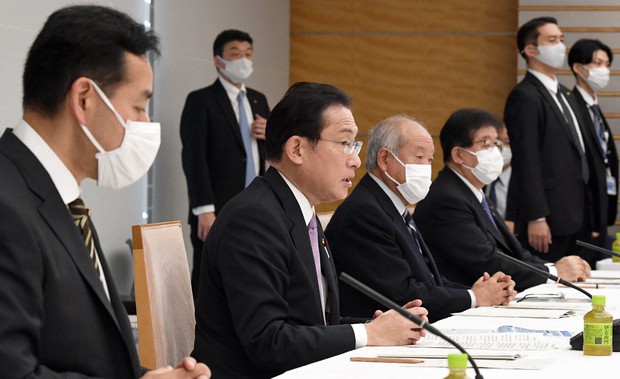Tokyo, 15 January, /AJMEDIA/
Japan may be able to restore its public finances in fiscal 2026, a year earlier than the previous estimate made in July, with tax revenue expected to increase as businesses recover from the impact of the coronavirus pandemic, the government said Friday.
Japan’s primary balance — tax revenue minus expenses other than debt-servicing costs — is expected to turn black in the year through March 2027 with a surplus of about 200 billion yen ($1.8 billion) under the most optimistic scenario, the Cabinet Office said in its biannual projection.
According to the latest projection, the world’s third-largest economy would still miss its goal of achieving fiscal consolidation in fiscal 2025, which was delayed in 2018 by five years from fiscal 2020 under former Prime Minister Shinzo Abe’s administration.
Japan has been struggling to improve its fiscal health with snowballing social security costs amid the rapid graying of the population and outlays to tackle the coronavirus pandemic.
But the office said reaching the fiscal 2025 target could “come into sight” if the country streamlines expenditure. Prime Minister Fumio Kishida also said the government will stick to the fiscal 2025 goal.
“We confirmed that the country is not in a situation that requires a change in the target fiscal year,” he said at a meeting of a key economic and fiscal policy panel at which the Cabinet Office’s estimate was presented.
Kishida’s comments followed a review by the government of the fiscal 2025 goal in light of the fallout from the pandemic on Japan’s economy and finances.
The bringing forward of the timeline was mainly due to envisaged increases in tax proceeds that are expected to continue growing gradually, led by rising corporate tax revenues amid a recovery of manufacturers and IT-related companies, according to the office’s medium- to long-term estimates.
In fiscal 2022 starting April, the government expects record-high tax revenue of 65.24 trillion yen, up 6 trillion yen from its forecast last July.
However, the estimate is based on the rosiest scenario, under which Japan’s economy continues to grow around 2 percent in real terms and around 3 percent in nominal terms from fiscal 2022.
As Japan’s economy achieved more than 3 percent nominal growth only once in the two decades through fiscal 2020, the country may not be able to realize fiscal consolidation in fiscal 2026 as projected.
If the Japanese economy records real and nominal growth of only around 1 percent, the country will be unable to achieve fiscal soundness by fiscal 2031, the furthest period covered by the latest estimate.
The country’s gross domestic product contracted a real 4.5 percent, or a nominal 3.9 percent, in fiscal 2020, with a primary balance deficit of 48.8 trillion yen, swollen by three supplementary budgets to tackle the pandemic.
The office warned of uncertainties regarding the economic outlook that should be carefully watched, such as the impact of the global surge of coronavirus infections with the spread of the Omicron variant.









































